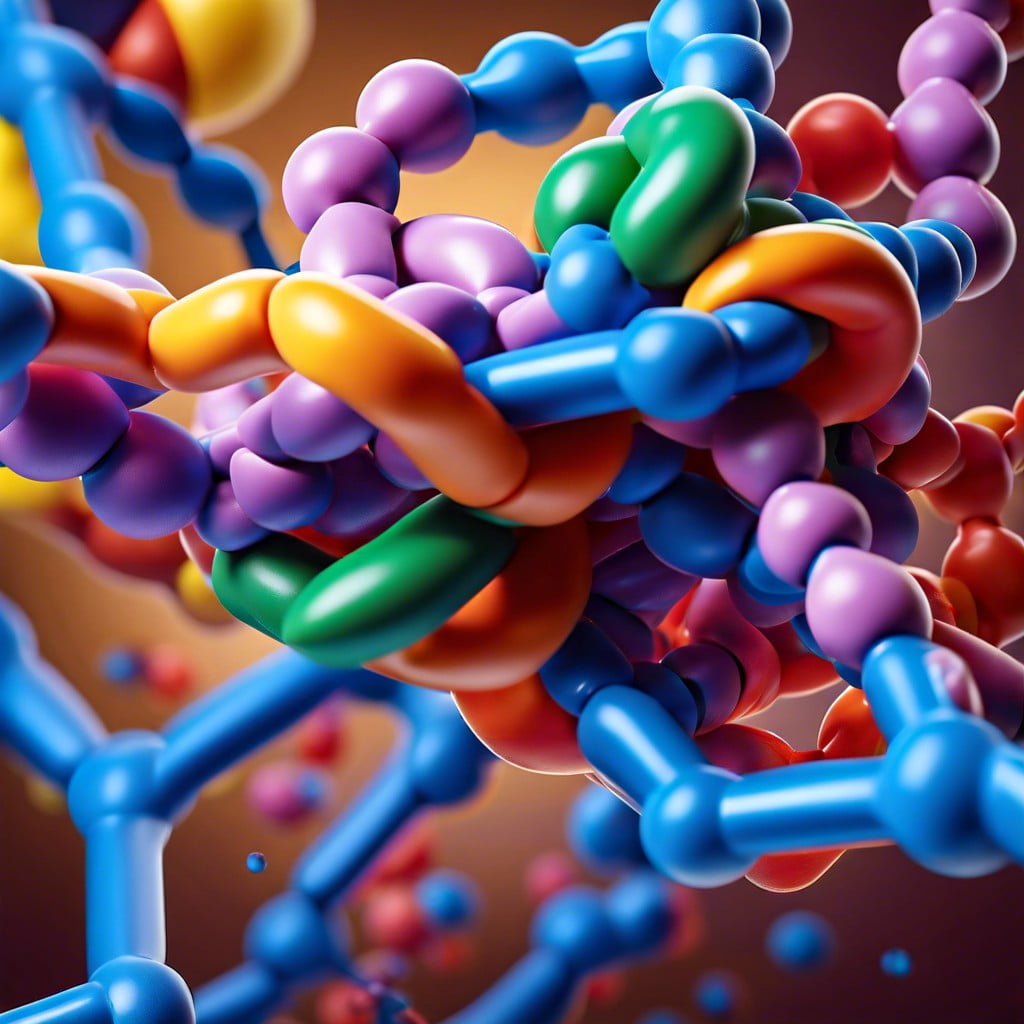This article explains what polymer def is and how it is used in various industries.
Key takeaways:
- Polymers are large molecules with unique characteristics.
- Properties of polymers include durability, electrical insulation, lightweight, and chemical resistance.
- Polymers are synthesized through polymerization.
- Polymers have diverse applications in construction, medicine, transportation, and everyday items.
- Polymers can degrade over time due to factors like UV light and heat.
Definition of Polymer

Polymers are large molecules composed of repeating structural units connected by covalent chemical bonds. These fundamental units are known as monomers. When monomers link together (polymerize), they form a versatile material with unique characteristics.
The diversity in structure and composition allows polymers to adopt a variety of physical properties, making them useful in numerous applications. For example, their molecular weight and arrangement can determine whether a polymer is flexible, like rubber, or rigid, like plastic.
Moreover, polymers can be both synthetic, like nylon, and natural, like cellulose in plants. This dual presence in natural and industrial contexts highlights their broad relevance and adaptability.
Properties of Polymers
Polymers exhibit a diverse array of properties depending on their structure and the materials used to create them. Let’s unpack some key properties:
**Durability** – Polymers are champions when it comes to resisting wear and tear. They can withstand bending, stretching, and squishing without breaking down. Great for anything that needs to last through rough conditions!
**Electrical Insulation** – Insulating properties make polymers ideal for electronic applications. They keep the electrons in check, ensuring our gadgets operate safely.
**Lightweight** – Compared to materials like metal or glass, polymers tip the scales on the lighter side, making them perfect for automotive or aerospace applications where weight saving is crucial.
**Chemical Resistance** – Many polymers laugh in the face of corrosive substances, which is why you’ll find them lining pipes in chemical plants or as containers for household cleaning products.
Each of these properties gives polymers a leg up in various applications, from building bridges to packaging food. Keep these in mind as we delve deeper into how polymers are synthesized and used in the next section.
Synthesis of Polymers
Polymer synthesis often starts with small molecules called monomers. These monomers link together in a process called polymerization. There are two main types: addition polymerization and condensation polymerization.
In addition polymerization, monomers bond without any byproducts. This process is often initiated by heat, light, or catalysts, leading to the creation of polymers such as polystyrene and polyethylene.
Condensation polymerization, on the other hand, involves the loss of small molecules as byproducts like water or methanol. This method produces polymers like nylon and polyester, which are pivotal in fabric and textile industries.
Temperature, time, and pressure are key factors that influence the structure and properties of the final polymer product. By tweaking these conditions, scientists can create polymers with specific characteristics tailored for diverse applications.
Applications of Polymers
Polymers are versatile materials used extensively across various industries due to their adjustable properties. In construction, they serve as sealants, providing a waterproof barrier that prevents moisture penetration. Structurally, polymers like PVC are used in pipes and window frames, noted for their durability and resistance to weathering.
In the world of medicine, polymers play a critical role in manufacturing disposable syringes and implants like hip joints due to their biocompatibility. Transportation sees the use of lightweight polymer composites, enhancing vehicle fuel efficiency without sacrificing strength.
Moreover, everyday items such as plastic bags, bottles, and toys are predominantly made from polymers, highlighting their fundamental role in modern manufacturing and design. This multifaceted application makes polymers essential in advancing technology and improving living standards.
Degradation of Polymers
Polymers can break down over time due to various factors. This process is known as degradation and affects the material properties and lifespan.
One common cause is exposure to ultraviolet light, which can break the chemical bonds in the polymer. This is why some outdoor plastics fade and become brittle.
Heat is another culprit. High temperatures can lead to thermal degradation, causing the polymer to lose its strength and elasticity.
Chemicals can also play a role; exposure to harsh chemicals can cause polymers to deteriorate. Similarly, biological factors like bacteria and fungi can break down certain types of biodegradable polymers.
Understanding these degradation processes helps in designing more durable polymer products and in proper disposal and recycling practices. This knowledge can be quite the superhero, saving the day by extending the lifespan of your favorite plastic items!
Recap




